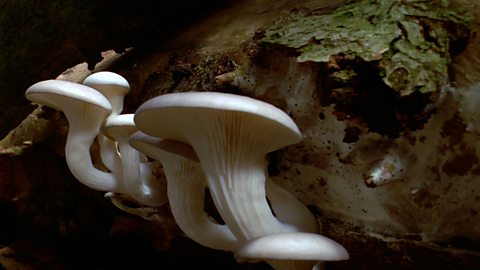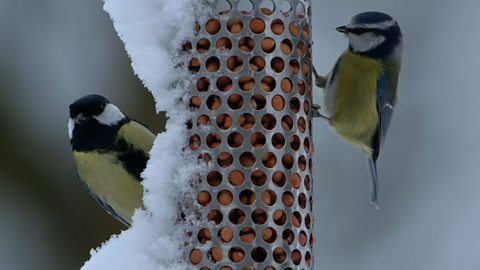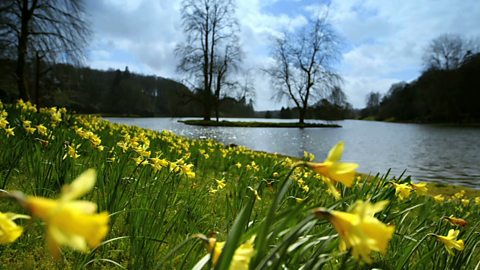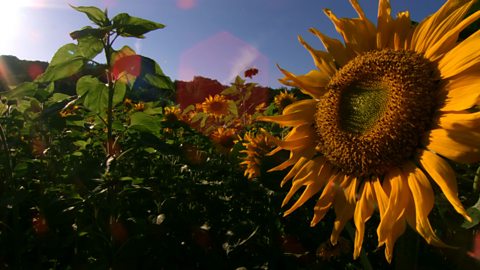Video summary
This clip shows the array of behaviour shown by plants and animals throughout the year, in tune with the seasons and the seasonal weather.
Plants and animals also time their lifecycles to coincide with each other.
Birds set up territories in the early spring, followed by courtship and the laying of eggs.
Chicks are born when there is an abundance of insects and plants to feed them with.
The good weather of summer and early autumn bring more ripening food for the animals, which they use to fatten themselves up or store for winter. In the winter, those that have not migrated or hibernated continue to search out food amongst the snow.
Some develop white camouflage to avoid predators, such as the mountain hare and ptarmigan.
Throughout the year humans enjoy seasonal leisure activities such as sunbathing, rambling or going on holiday, giving little thought to the growing or harvesting of food.
This clip is from The Great British Year.
Teacher Notes
Key Stage 1 / Key Stage 2:
A discussion could be started on how animals find food to eat in the winter, and how humans can help them.
This clip will be relevant for teaching Science/ Geography.
This topic is suitable for KS1 and KS2 in England and Wales and in Northern Ireland. Also Early and 1st Level in Scotland.
How fallen leaves are broken down by worms, fungi and slime molds. video
How leaves of broadleaf plants are broken down by earthworms, fungi and slime molds.

How winter weather affects the behaviour of British animals and plants. video
Winter for animals is not so much fun, and this clip looks at the work animals put in with their continuing quest for food.

What does it take to raise a baby bird? video
Male birds sing to attract a partner and warn other birds away. Then the partner birds team up to incubate the eggs and feed the young.

How autumn weather affects the behaviour of British animals and plants. video
Animals in autumn prepare for winter by storing food, migrating or hibernating.

How spring weather affects the behaviour of British animals and plants. video
Seasonal changes in behaviour of animals and growth cycle of plants in spring time.

How summer weather affects the behaviour of British animals and plants. video
Wild animals find a variety of abundant summer food sources.
